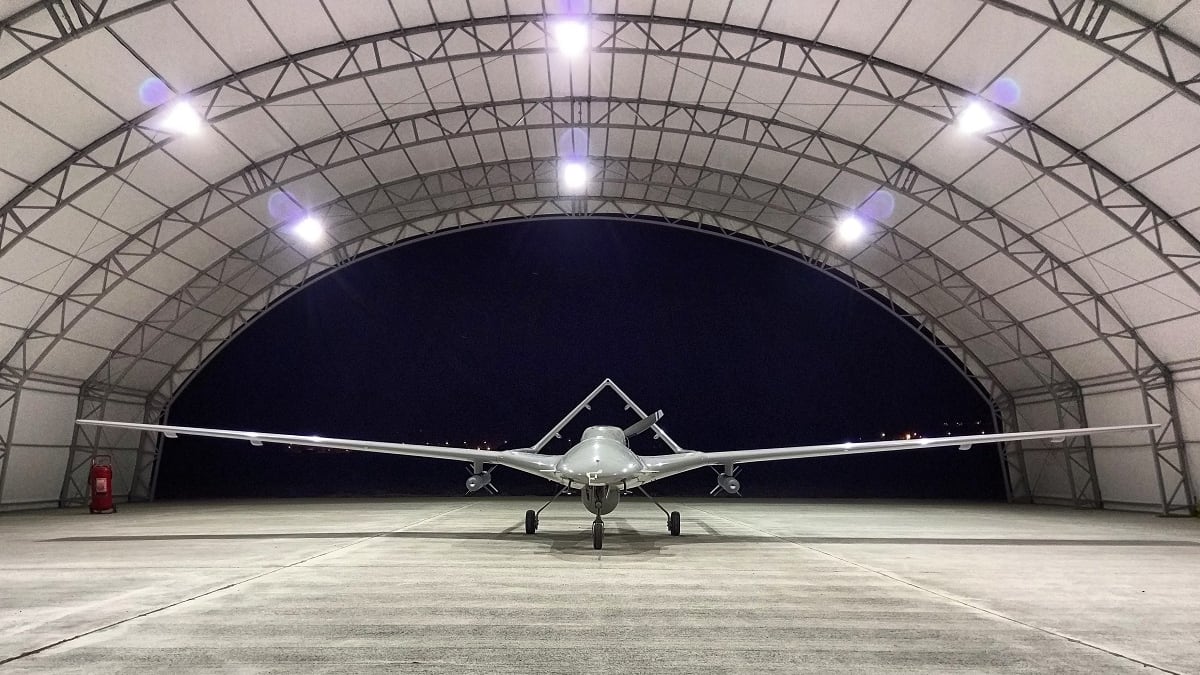Why is it easier for our allies and partners to buy unmanned aerial vehicles from China than from the United States? The answer lies in U.S. export policy.
Since 1987, the United States has voluntarily adhered to the international nuclear nonproliferation export guidelines of the Missile Technology Control Regime, or MTCR. These guidelines classify UAVs as nuclear-capable cruise or ballistic missiles — an assertion that does not align with pragmatic operational realities. Instead of making the world safer, the MTCR and U.S. export policy are opening the UAV market to irresponsible actors. The time has long come for U.S. policy to recognize and treat UAVs for what they are: aircraft.
UAVs are essential, high-leverage tools in modern military operations — from ISR to strike and beyond. As the nation now positions to compete against high-end peer threats, American success depends upon leveraging unmanned aerial systems across the spectrum of combat. This means that our allies and partners must also have access to these same systems.
Allies and partners are essential force multipliers for America’s national interests. They can provide a forward presence and deterrence in critical regions of the world, freeing U.S. assets for other global commitments or increasing force density where required. But they need the necessary tools. That’s why UAV exports are crucial for our allies, can deter adversaries and send a clear signal of America’s enduring commitment to areas of interest around the globe.
Building and sustaining successful coalition operations demands a U.S. policy shift for UAV exports. Just like it is important for cellphones to operate seamlessly across different networks and for apps to integrate seamlessly on an array of platforms, interoperability in the combat aviation arena depends on using equipment that can access U.S. military information enterprises and share data in a real-time, seamless fashion. That means allowing allies to procure and operate the same types of UAVs as the U.S. military.
Unfortunately, the MTCR and U.S export policy have not kept pace in this dynamic field. The U.S. does not have a lock on UAV technology, so allies and partners blocked from procuring U.S. systems will turn to the international marketplace — which often means China.
RELATED

The Asian superpower is exploiting this market vacuum to advance its global posture and empower its indigenous UAV innovation efforts. China does not impose restrictions on end use of its UAVs, and it has used sales to advance the quality and capability of its UAVs.
Chinese military analyst Song Zhongping observes that “the United States restricting its arms exports is precisely what gives China a great opportunity. The sales are helping expand Chinese influence across a region vital to American security interests.”
Chinese equipment erects barriers to more effective coalition operations because it poses a security liability. Left unchecked, Chinese UAVs create the opportunity for Chinese intrusion into U.S. systems and networks to observe or disrupt operations. Coalitions fundamentally rely on trust. That bedrock is rapidly eroded if the equipment used by U.S. partners is suspect.
Despite the Obama and Trump administrations’ modifications to UAV export policy in both 2015 and 2018, allies and security partners still face the “strong presumption of denial” when requesting UAV capabilities, thanks to the MTCR provisions. The State Department is currently in dialogue with the administration for another UAV export policy modification. If the past is any indication of progress, not much will change: These crucial relationships will still start at “no.” This will only continue to push critical regions into the arms of China.
Global security realities demand a change. Legislation is needed to provide a clear definition of UAVs as aircraft to align U.S. export policy with U.S. interests. Because this issue is cross-jurisdictional, both the Armed Services and the Foreign Relations committees should collaborate to craft language in 2021 that affirms the U.S. commitment to nonproliferation and defines UAVs as aircraft — not cruise missiles. As aircraft, these systems should not be subject to the MTCR export controls. This language should allow for co-development and co-production of UAVs with allies and partners, as well as any other privilege or consideration afforded to military aircraft.
Continuing to subject unmanned aerial vehicles to the guidelines of the MTCR harms critical relationships, U.S. interests and coalition operations. By defining UAVs as aircraft, America can strengthen its relationships, presence and leadership while simultaneously curbing the influence of China and other irresponsible actors. The time has come for the U.S. to define UAVs for what they are: aircraft.
Heather Penney is a senior resident fellow at the Mitchell Institute for Aerospace Studies. She served in the U.S. Air Force for more than 20 years, during which she flew the F-16 fighter jet. She also has over 10 years of defense industry experience.








